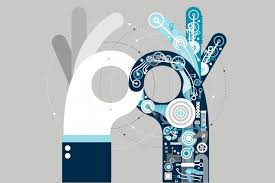
Many of us get the understanding of artificial intelligence from the film industry. It creates an image of smart, humanized machines that are helpful, efficient and omnipresent. It is true that AI has seen rapid advances in the past several years, to the point that it became an integral part of our everyday life. In real life, however, AI is far away from the level portrayed in sci-fi movies. And yet there are affordable AI tools and solutions that can make a significant impact on your business.
Here are three main reasons why a company, especially if it is a B2C company, should consider integrating AI into their business process.
AI makes your sales process scalable
AI solution dealing with your prospects and customers works 24/7 without sick days, holidays and breaks. It can handle any level of traffic, incoming inquiries and conversations. It does not need to be trained. It does not have personal issues or bad days. It is always polite and uses professional jargon. It is fast.
AI creates better user experience
Some might find it surprising but this is only because they have experienced low quality AI solutions. A professional AI solution makes customer experience better primarily because it delivers the results with a minimum of fuss and maximum efficiency. A good AI eliminates bureaucracy, makes customer experience speedy and seamless, and that’s what consumers are looking for today.
AI offers sustainability
Adding AI to your business model creates long-term sustainability for the business. It allows your business to grow while controlling, or even minimising the costs. More importantly, it ensures that the business remains competitive in providing the level of customer service consumers became accustomed to. Lastly, it creates platform for future technical improvements and integrations which, without a doubt, will be based on Artificial Intelligence components.



